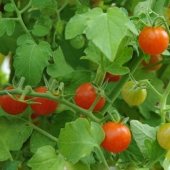


james beam wrote:Oh I tried that sketch-up program yesterday...strangely wierd, wayyyyyyyyy beyond me! I can't even build a simple box with it, LOL, I'll keep playing with it, maybe I'll learn how to do something with it.


 , when I was browsing their Fun Thing to Grow list.
, when I was browsing their Fun Thing to Grow list.

Julia Winter wrote:If you're going to buy something on Amazon, start here at Paul's cast iron article and scroll down to one of the Amazon.com links. It will activate a cookie that gives Paul some sort of teeny kickback for whatever you buy in the next, I don't know, hour or so. You don't have to buy the particular thing that is linked, so just click on the link and then enter what you want in the search box.